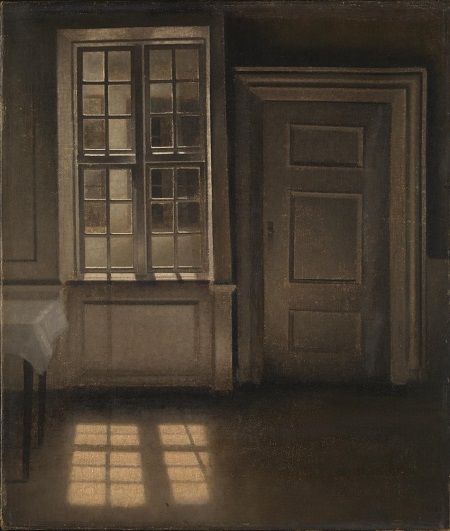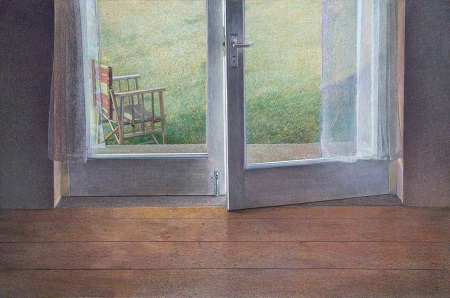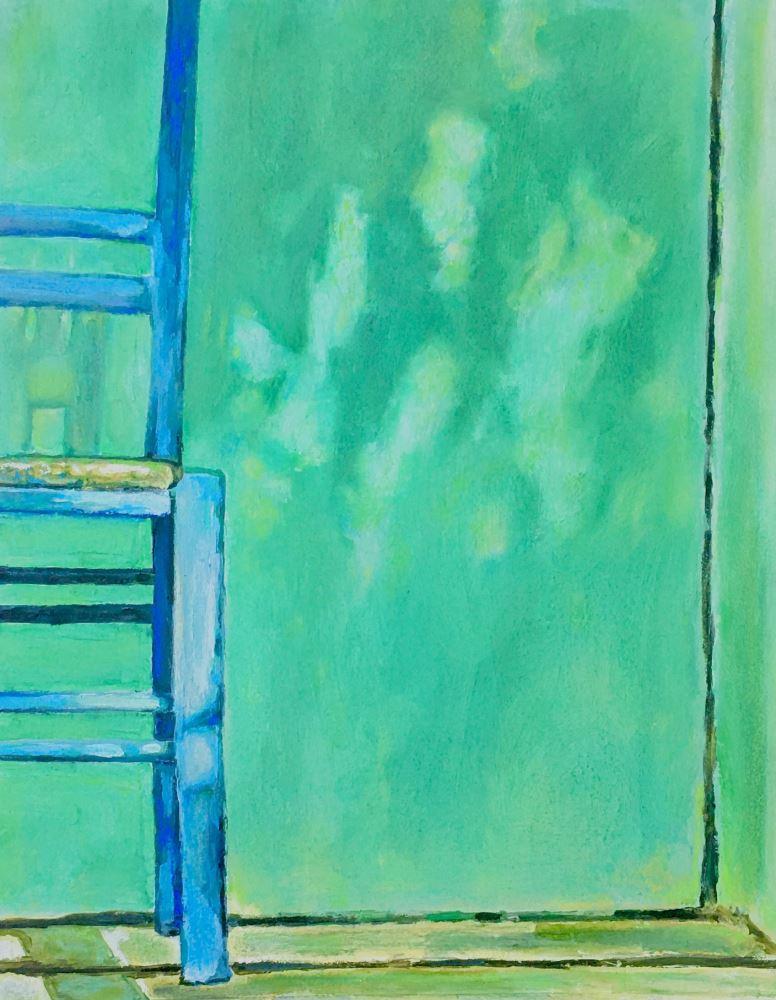The use of the (philosophical) interior in art.22/06/2024Author: Tammy Woodrow
A short while ago, I visited a play in Birmingham written by my friend Vanessa Oakes. The scenery on stage was simple but effective, with just a chair and the occasional projections in the background. But in combination with the actors and the text, it resulted in an emotive experience. It made me realize that you don't need many props to tell a story, to set a background for a narrative. The same could apply to any other form of visual art.
I would call it painterly mindfulness. We are all currently trying to practice this state of mind in our own lives. Trying to slow time down, being in the moment, being conscious of what you are doing with your life, appreciating the here and now. The emptiness of the room also stirs up your imagination; what has happened here, who is coming through the door, where is When I used to work at that gallery these 2 paintings always caught my eye because they are so unusual, being so empty and mysterious. They draw you into their space. Why is it so fascinating to look at an empty space? Although they appear so calm because nothing is happening, there is at the same time an unspoken tension in the atmosphere. There is such a sense of tranquillity and the peacefulness oozing out of his paintings and they are so recognizable because of Tindle’s signature style, his muted palette and use of his favourite medium egg tempera on masonite. In David’s own words: “It is a dry powder pigment mixed with egg and water and it’s a very ancient medium used by Renaissance artists. It is a very fine, very, transparent sort of paint, and it dries very quickly, it also doesn’t yellow, whereas some early renaissance paintings are amazingly clear others done as recently as the 19th Century look very black.” To me this rapid act of working against time, contradicts what he is trying to say with his painting of deep, slow time. He attempts to capture that floating moment from his own memory. David also prepared his own panels by coating Masonite (hardboard) with layers of mixture of chalk and rabbit glue. He used this process in order to create a smooth, hard brilliant white surface. This method absorbs paint very quickly, so the painting is very difficult to alter. Don’t you already have to be in a certain way of mindfulness when you start this painting process? You would have to be extremely focused.
Door Slightly Open, David Tindle. There is stillness and silence in his work, which seem to be the only narratives. He deals with tranquillity, the transience of light and the passage of time. David has lived in France and Italy, in search of that special sort of light. Like the early Italian masters, he is also exploring the mysteries of being. UK Artists’ handpicked collection of professional artists also includes some great examples of room portrait artists. I would like to highlight a few of them who work with a similar subject matter like Tim Gilpin. His Yellow Belly (main image, acrylic on canvas, 2023) depicts a sparse enigmatic interior where there is an atmosphere of existential isolation. There is also Holy Chest (small main image, oil on canvas) by Luiza Grabda Pawluc. Blue Chair (acrylic on primed paper, acrylics with pastel brushings) by Ian Allred is another talented artist of the UK Artists and Paintings collection who I can’t leave out of this assembly. Blue Chair, Ian Allred To conclude, let’s have a look at Lumière Fantôme (oil on block canvas, image continues around the edges, ready to hang, 2022) by Lee Campbell. Tammy Woodrow |
The use of the (philosophical) interior in art. |







Comments